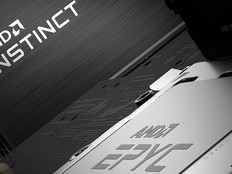Leading the Way on Health IT
It’s understandable that many doctors and hospital administrators tend to view an electronic health record (EHR) as simply a computerized, shareable version of a paper chart, stuffed with a traditional text-based patient health history, care notes, lab results and medication history. After all, it’s all they’ve ever known.
It’s understandable that many doctors and hospital administrators tend to view an electronic health record (EHR) as simply a computerized, shareable version of a paper chart, stuffed with a traditional text-based patient health history, care notes, lab results and medication history. After all, it’s all they’ve ever known.
Researchers and clinicians at the Army Telemedicine and Advanced Technology Research Center (TATRC), however, have a much grander vision for the EHR. The center, founded in 1998, provides more than $400 million annually in funding to support research surrounding a range of technologies designed to improve all aspects of military medicine.
Prominent among these are point-of-care and telemedicine technologies that can deliver real-time, easy-to-digest data to the EHR for vastly advanced clinical decision support, improved quality and increased patient safety.
The ultimate vision is to create an environment where doctors and medical staff can access information on smartphones, handhelds, netbooks, notebooks and desktop systems that combine data from medical devices, patient records and real-time observations.
“The big benefit we miss by not having the automated integration of that information is advanced clinical decision support,” says LCDR Steve Steffensen, a Navy neurologist who serves as TATRC’s chief medical information officer. “Right now, if you have a printout from an EKG monitor, for example, you still need a human to interpret the EKG and input that interpretation into the EHR.”
Digitized information gathered and accessed at the bedside is a critical element in expanding the use of health IT to improve the efficiency and effectiveness of patient diagnosis and treatment, Steffensen says.
“If you have streaming data coming out of an EKG monitor or even a ventilator that’s feeding directly into an EHR, which contains other information like vital signs or the patient’s most recent creatinine levels, you can make much more rapid, educated decisions based on clinical practice guidelines,” he explains.
An Organization on a Mission:
TATRC’s investment in medical technology research has grown 800% in little more than 10 years.
To move health IT closer to this vision, some of the things TATRC is working on include digitized bedside medical devices and biomonitoring tools, natural language processing (NLP) technologies that can automatically translate a doctor’s verbal dictation and free text into computerized code and algorithms, and applications that turn that code into easy-to-digest longitudinal data and graphical information.
Adhere This
A wireless monitoring device, known unofficially as the “wireless band-aid,” is being developed to continuously measure key vital signs of wounded soldiers — including heart rate, blood pressure and oxygen saturation — from the point of injury through the care process. The collected data is wirelessly transmitted from the device to a small computer worn by the combat medic to speed decisions on patient triage, medical treatment and evacuation.
“This technology will help physicians more effectively manage the use of their time and attention when it is needed since the device provides alerts only when the patient’s vital signs are outside the stable/normal range,” says Dr. Eva Lai, who leads TATRC’s Biomonitoring Technologies Portfolio.
TATRC officials also envision that the data will be integrated and aligned with a patient health record to ensure that clinicians have full and complete data for treatment purposes.
The wireless band-aid has other benefits: It is small and mobile, which means medics can easily carry it in their supply bags, and it makes patient transport in the field much less cumbersome. It can be discarded after one use, reducing cross-contamination issues. And it is outfitted with a geographic information system application for use in tracking patients during evacuations. It could even be used as a preventive measure; for example, if outfitted with a body temperature sensor, it could be placed on soldiers working in hot environments and alert medics when a soldier’s core temperature is heading toward heatstroke levels.
The technology is still in the proof-of-concept stage, but TATRC is fast-tracking it, according to Lai. The center has already mapped out a strategy to take the device from concept to prototype to field testing. If all goes well, the earliest field testing could be within three years, she says.
Going With the Grain
A major issue with many health IT tools is that they tend to interfere with the way doctors have historically worked. Rather than enter codes, doctors tend to be more comfortable verbally dictating patient information or typing it into a computer using free text.
In response to this cultural challenge, TATRC is testing ways to ease the transition to health IT for doctors. One project evaluates the use of Nuance’s Dragon Naturally Speaking, Medical version, which translates dictation into text. A second project will determine if, and how well, a natural language processing engine can automatically convert that text into computable codes.
Bob Connors, executive health manager for TATRC, notes that even if the resulting codes and data can be integrated into the military electronic health record, expediency still requires better ways to present and graphically display the data.
To that end, TATRC is evaluating tools that allow the creation and display of timelines and graphs from dense collections of data to show trends and variations, as well as provide context. For one Small-Business Innovative Research project, Stottler Henke is focused on the time display of data, and for another, SSCI created a display to show only clinically relevant, context-sensitive data at the time of a visit.
“There is a great need to display longitudinal data over time, especially as it relates to chronic conditions, like blood sugar levels for diabetics or blood pressure for heart patients,” Connors says. “At the same time, we don’t want to bring in everything in a way that might overwhelm the doctor.”
Quality In, Quality Out
Data from electronic health records not only helps treat individual patients but also can help identify clinical best practices. Unfortunately, when doctors set out to do a quality assurance study, “it can take weeks and months to pull patient charts, extract data, go find a statistician and present the results to a committee,” says Connors.
To address these challenges, TATRC is evaluating a clinical intelligence tool developed by the Montefiore Medical Center in New York. It lets doctors easily build cohorts of study and control patients using data contained in EHRs.
If a doctor is studying a diabetes drug that might cause cardiovascular risks, for example, the Clinical Looking Glass lets her define diabetes however she wants and include certain parameters for labs, pharmacy and radiology. It also lets users set filters tied to complicated epidemiological events, such as risk periods.
“This tool does it all in 10 minutes at the desktop, and it self-documents everything: where the data came from, what the metrics are, what the statistics are,” Connorssays. “And it graphically displays the results so the physician can simply take it as a report to the quality assurance committee or use it in a published study.”
The project already has doctors clamoring to get such tools into wider use within the military health system. And TATRC is hoping to do just that. The project is funded through this year, and the center has established plans for a prototype at the Air Force Health Center at Brooks Air Force Base.
“I hope to let doctors at Walter Reed, Bethesda and elsewhere actually see a tool work with their real-life data and get some grassroots-level support for this,” Connors says. Then, the case can be made for the Defense Department to create a requirement for one and approve funding to field it, he says.
In the Thick of HIT
TATRC’s influence goes beyond supporting the development of individual bedside technologies. The organization is the DOD leader for an advanced concept demonstration for the Nationwide Health Information Network and the open-source CONNECT initiative, which are being designed to support the sharing of patient health information on a national scale. It also recently partnered with the Office of the National Coordinator for Health IT to push the development and adoption of standardized interfaces between bedside technologies and EHRs.
Steffensen says that because TATRC is focused on researching the advancement of military healthcare, which
covers everyone from dependent children to retirees, and because it deals with a variety of universities, healthcare organizations and research institutions, it is in a position to coordinate research and standards activity in a way that few organizations can emulate.
“For all practical purposes, military healthcare looks a lot like civilian healthcare, but with the added requirement to render treatment from battlefield to bedside in austere, high-stress environment,” Steffensen says.
Also, TATRC’s willingness to share its research findings and contribute to open-source initiatives lends it an air of objectivity that helps it attract pre-eminent researchers for its projects, he notes.
“While creating something that has use and benefits to military medicine, TATRC is able to bring together a diverse group of the best and brightest people in health IT to promote collaboration in a way that, on their own, they’re unable to facilitate,” says Steffensen. “Ultimately, what we create extends beyond the military to benefit all of healthcare.”







